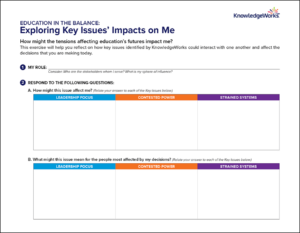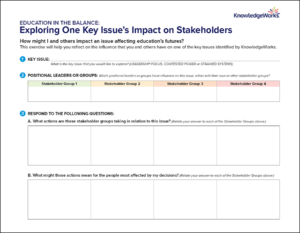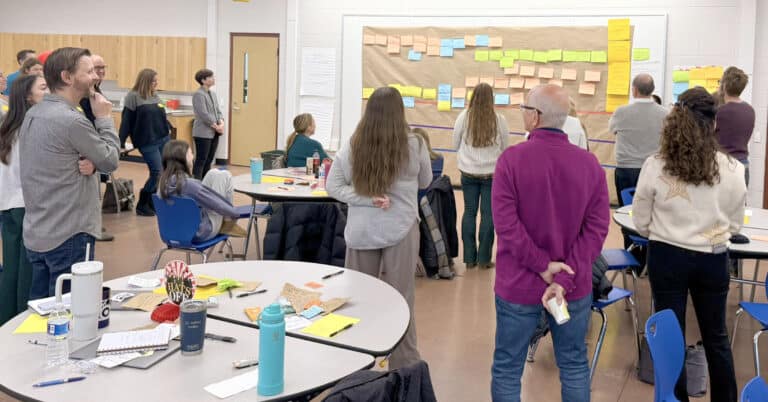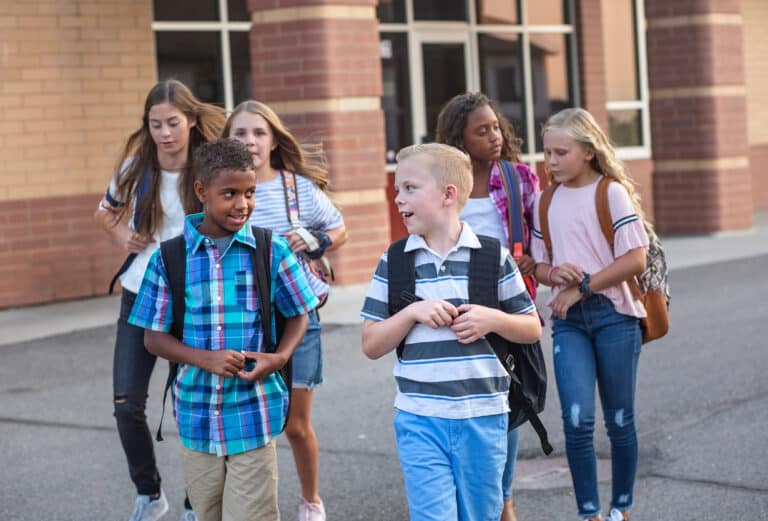The COVID-19 pandemic has deepened longstanding inequities, highlighted the shortcomings of traditional approaches to academics and social-emotional learning and brought into stark relief schools’ broader social functions – including feeding children, keeping them relatively safe and providing custodial care.
Concurrently, the public outcry caused by the murders of George Floyd, Breonna Taylor and other Black individuals has pushed long-brewing tensions to the fore, including the role of schools and education systems in perpetrating and reproducing systems of oppression. The pandemic and the racial justice uprising are increasing the level of uncertainty surrounding both current decisions and efforts to shape the future of learning.
Leaders at all levels of education – from classrooms to buildings to districts to communities to states to the Federal government – need to grapple with key issues and the tensions that they raise as they strive to meet learners’ needs in virtual, hybrid and place-based settings. These issues include leadership focus, strained systems and contested power. Facing extreme uncertainties and grappling with challenges that have no easy solutions may seem overwhelming. However, if leaders co-create spaces to explore these issues and the tensions that they raise with inclusive groups of stakeholders, they can find focus and can clarify how to influence the future of learning.
Setting bold visions for the future of learning is hard enough in the best of times. During times of crisis, it can be especially hard to lead toward something other than what people have known. Many changemakers have expressed excitement about the possibility of building on education’s recent adaptations to make deep change to education systems – in particular, to dismantle inequitable structures that fail to serve or harm learners because of their socioeconomic status, gender, sexuality, gender expression, race, (dis)ability, immigration status, linguistic heritage or other label. Other stakeholders have been focusing exclusively on mitigating short-term challenges. Returning to “normal” understandably holds great appeal for many who are tired of navigating COVID-19. Yet returning to any normal that perpetuated systemic inequities would be disheartening and damaging for those who have borne the brunt of education’s oppressive structures.
In the face of these dynamics, leaders at all levels could seize the opportunity to pursue systemic change, helping others see that education could look and feel different than it used to and shepherding the transition toward fresh visions. Alternatively, leaders could take the short-term path of least resistance by attempting to return to an outdated and inequitable status quo. While engaging in long-term thinking and pursuing transformation amidst crisis is difficult, there is growing understanding of their importance, along with some desire to broaden perspectives on what innovation means and looks like and to build resilience for the next crisis.
- In response to disruptions, some schools and districts have been prioritizing or accelerating the use of models, such as project-based learning, personalized learning and competency-based learning, that help engage and support learners. In addition, many education thought leaders have pointed to specific ways in which schools could leverage a difficult time of deep change to achieve long-lasting transformation.
- Despite novel and uncertain circumstances, some education leaders have decided to attempt to replicate the traditional school day online or to monitor the activities of students and teachers who have had to start working in new ways.
Where do you you see opportunities to change education systems while navigating turbulence?
Where do you want education to stay the same – and why?

Jason Swanson, Robin Kanaan and Virgel Hammonds had a recorded conversation, focusing on the role of leadership during this moment of tension.
Learners, parents, teachers and community members who have been heavily affected by racial inequities are finally being heard by a growing number of people in traditional power circles. Both the disruptions to schooling caused by COVID-19 and the heightened attention to racial justice by people with privilege have opened new avenues of influence for these stakeholders. Increasingly, leaders are becoming aware that well-intentioned education reform narratives have not borne fruit for communities of color and that those narratives have in some cases been harmful. As questions about what happens in education and who gets to say have deepened, efforts to broaden curricula and to address the trauma caused by public education have intensified. Awareness of the need to center the voices of other historically marginalized groups and to pursue educational justice for them has also been spreading.
Some schools and school districts have been rising to the occasion by opening new channels of collaboration and co-creation to solve problems and encourage authentic involvement. At the same time, some grassroots leaders have been organizing people to create their own solutions. Yet some in positional power have rejected community calls to attend to racial injustice, calling such efforts divisive or un-American.
- In the context of education systems’ longstanding failure to provide a quality education to Black and Brown students, grassroots parent organizing groups such as Oakland Reach’s City-Wide Virtual Hub have been creating infrastructure to support vulnerable children and their families during distance and hybrid learning. In addition, some school leaders have been relying on parent-led advocacy organizations to connect with families, and increasing numbers of school districts have responded to community organizing by deciding to remove school resource officers from campuses.
- Only a small percentage of school reopening plans have specifically addressed racial equity. Yet most parents of color continue to worry about their children facing racism from other students and staff and experiencing discriminatory police actions in school, and parents of all races want schools to offer implicit bias training to staff, hire trauma-informed guidance counselors and teach culturally responsive curricula.
Where could you create opportunities to overhaul educational decision making and authority?
Where do you feel attached to established approaches?
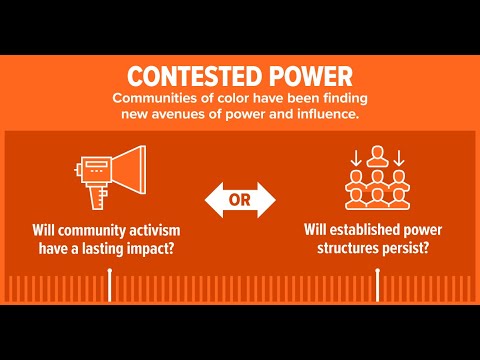
In this recorded conversation, Gregg Seaton and Jason Swanson discuss contested power and how education leaders can help rethink systems and stakeholders through examining examples, learner agency, transparency, assessment and accountability, educator workforce preparation and roles of caregivers.
Education systems face complex, systemic problems, and perspectives on how to support historically marginalized students vary greatly. Decades of defunding public education, increasing demands, political polarization and a lack of will to address systemic inequities have left school districts with limited human and capital resources and with a funding system that reduces budgets when the economy falters. With state budgets trimmed and more cuts likely, some school districts have turned to emergency sources of funding and creative solutions to meet the challenges of adapting education for COVID-19, prioritizing services for the most vulnerable learners and addressing all learners’ deepening needs. Beyond the pandemic, some stakeholders have been working to bolster education systems’ capacity to meet learners’ and communities needs and to explore partnerships and funding mechanisms that fit them better than current approaches do.
Without such shifts, efforts to shore up education systems will not be sustainable, for people have been working hard to support learning in ways that education systems were not designed to do. Pandemic-related gaps in access to technology, to spaces conducive to learning and to supplemental learning opportunities – along with growing food and housing insecurity – have been exacerbating longstanding divides among students, school districts and communities. Educators have risen to the challenge of reconfiguring instructional and service models, but systems may lack the capacity to continue working at the edge as conditions shift and as the health and well-being of the individuals propping up ill-equipped systems are threatened. Despite novel and ever-changing conditions and some moves to broaden partnerships and tweak funding, the rules of education systems remain largely unchanged.
- During the COVID-19 pandemic, networks and pilots in multi-sector collaborations have created new infrastructure for sharing information and resources and supporting students, families and schools in ways that districts’ capacity would not have allowed. In addition, schools and community organizations have been finding new ways to support students through virtual events, telehealth sessions and socially distanced activities.
- Despite a looming funding crisis, few elected officials or school leaders have been creating explicit plans to fund the increasing costs associated with health and safety measures for in-person learning; technology, family outreach and inclusion for distance learning; and supports for student trauma and learning loss.
Where might you advocate for new approaches and resources that could bolster systems’ capacity?
What challenges might you face?
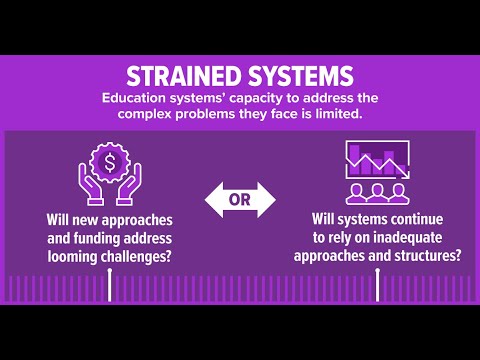
In this recorded conversation, Lillian Pace and Rita Pello discuss this the strains on the public education system and how education stakeholders can lead their states and districts into a better place.
Facing Uncertainty: Sensemaking Templates
As leaders at all levels of education work to manage current reality and pursue future visions, the choices that people make in addressing these issues will set the parameters for what is possible for learning – and for every learner. For an overview of these issues, download our infographic below. For suggestions for making sense of these issues in your context, download our sensemaking templates below.




